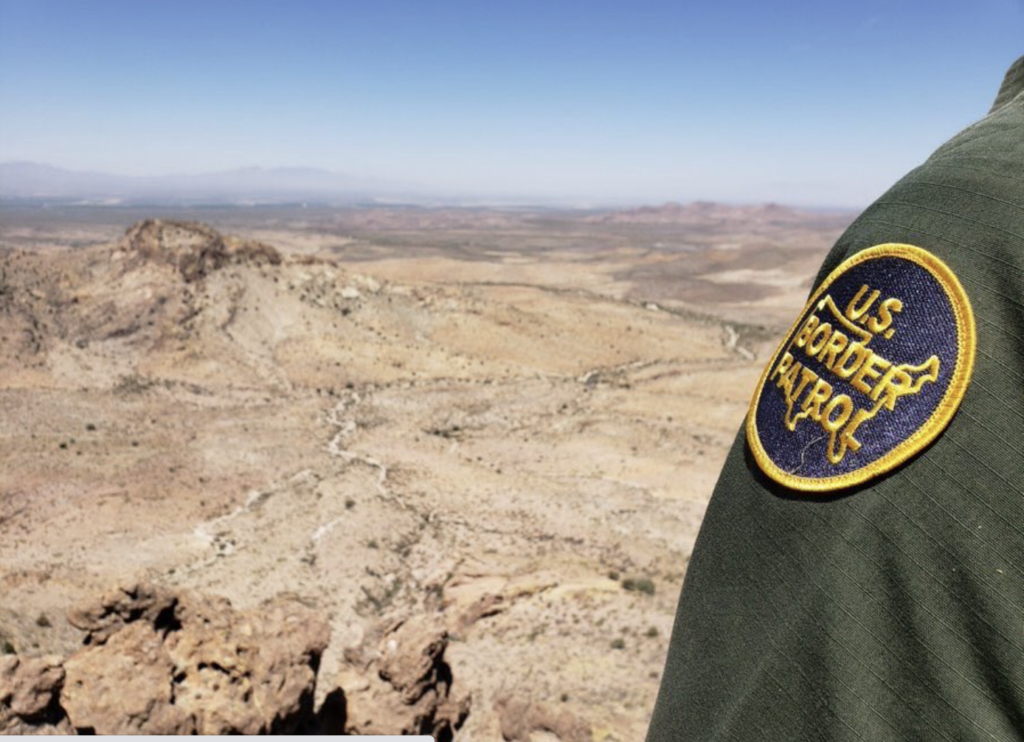Nothing riles up the electorate like fentanyl overdoses, which are now the leading cause of death of men between the age of 18 and 45. Governmental institutions from the FBI to local police departments have identified fentanyl as a major public safety threat.
“Fentanyl is one of the greatest challenges that we are facing as a country, and our efforts are multipronged in addressing the traffickers who peddle in death and destruction,” Department of Homeland Security Director Alejandro Mayorkas told DHS employees at the John F. Kennedy International Mail Facility on July 13. “We are using all of our resources, all of our capabilities, and our tremendous creativity to guarantee traffickers will not get ahead of us.”

Unfortunately, Mayorkas is wrong about one thing: The traffickers are still ahead of us. In fact, they’ve been ahead of us for decades. And if Mayorkas were being honest with the American people, he would have to acknowledge his own agency’s extensive involvement in drug trafficking. Let’s take a closer look.
On June 23, the feds secured a guilty plea from Carlos Passapera Pinott, 56, whom they had charged with fentanyl and human trafficking in an Arizona federal court. Federal agents say they found him near the southern border with 350,000 fentanyl pills and more than $500,000 in cash, 21 kilograms of cocaine and one kilogram of heroin. The bust was a spectacular success, dwarfing the operations local police departments boast about after shaking down lower-level street dealers.
Passapera was a ten-year veteran of US Customs and Border Protection. According to investigators, Agent Passapera was using his badge to traffic drugs. The alleged scope of his on-duty misconduct was staggering: he’s been charged with assisting in at least 19 instances of drug trafficking and 42 instances of human smuggling—all since 2019.
In other words, CBP Agent Passapera was working for the same drug trafficking organizations he was supposed to be fighting.
This case must be an anomaly right? Not exactly. Agent Passapera is just one of a slew of CBP officers who’ve been arrested and charged with drug trafficking.
On July 6, CBP Officer Leonard Darnell George, allegedly known to traffickers as “the goalie,” was indicted on charges of accepting bribes from drug cartels to allow vehicles containing fentanyl and methamphetamine to pass through the agency at the border. In May, CBP Agent Hector Hernandez was arrested and charged with smuggling 23 pounds of methamphetamine and accepting a bribe from undercover officers.
In January, CBP Officer Oberlin Peña was sentenced to 10 years in prison after he admitted to helping drug traffickers ship cocaine through vulnerable checkpoints.
In December 2022, CBP Officer Ramon Monreal was convicted of trafficking more than 100 pounds of cocaine through legal ports of entry. In July 2022, CBP Officer Oziel Cantu was sentenced to 10 years in prison for trafficking more than 40 pounds of cocaine. In March 2020, CBP Officer Ivan Van Beverhoud was accused of smuggling 17 pounds of cocaine. In 2019, CBP Agent Robert Hall was convicted of receiving cash payments to give drug traffickers sensitive intelligence to help them traffic drugs.
That’s a whole lot of drugs coming into this country with direct assistance from official representatives of the U.S. government. Just a few rogue officers, right? Not quite.
According to the CATO Institute, 158 CBP employees were convicted for corruption-related offenses between 2005 and 2016. But these are just the ones that got caught. The former head of CBP’s internal affairs unit, James Tomsheck, estimated that between five and 10 percent of the CBP workforce was involved at some point in corrupt activity. Former Senior CBP Agent Jenn Budd has documented systemic corruption as well as rape culture in her recently published book, “Against the Wall, My Journey from Border Patrol Agent to Immigrant Rights Activist.”
This is Banana Republic-level corruption, and one would imagine these incidents, analyzed collectively, would lead to 24-hour national news coverage and a bevy of Congressional inquiries: The law enforcement agency most responsible for stopping drugs passing through our border has become compromised.
Heads would roll, and the Border Patrol would take a reputational hit. Intrepid journalists would publish Pulitzer Prize-winning articles uncovering how a major U.S. law enforcement agency has become utterly compromised by drug cartels.
Not so. For the most part, incidents of Border Patrol corruption are portrayed as isolated acts of rogue officers—if the news media covers them at all. Other than a handful of stories from independent journalists like Gabe Ortiz, Ryan Deveroux, and Emily Green, who dared to ask hard questions, it’s crickets from the corporate-controlled TV and print media.
The Border Patrol is a relatively new agency whose ranks have swelled from around 5,000 agents in 1992 to around 20,000 today. The number of corruption cases doesn’t show any signs of slowing. Attempts to combat corruption within the agency have been laughably unsuccessful. And yet, crickets also from Capitol Hill—both Democrats and Republicans—who assume without question that increasing Homeland Security funding is necessary to reduce and stop drug trafficking. In fact, in this year’s budget cycle, President Biden proposed an $800 million budget increase to CBP with no functional opposition from either party.
What we do hear about—often—are successful busts from CBP through a well-oiled public relations machine boasting of its latest arrest. Just last week, CBP told CNN it confiscated $1.5 million worth of fentanyl hidden in a shipment of porcelain sinks. The people attempting to cross were using a “border crossing card”—an identity document for Mexican nationals used to enter the United States.
“Narcotics traffickers will try new and innovative ways to smuggle dangerous drugs across our borders, but CBP officers are always on their toes,” the CBP’s Otay Mesa Port Director Rosa Hernandez told CNN.
Ironically, a few days later, a CBP officer from an adjacent port of entry, San Ysidro, was indicted on charges of systemic trafficking. Yet CNN noted: “U.S. border protection officers have seized over 19,800 pounds of fentanyl so far in 2023, CBP data shows,” as if the sheer amount should allay any concerns that, just maybe, CBP is not doing its job.
The fentanyl busts we do hear about—the ones that enjoy around-the-clock news coverage from cable news—tend to involve non-citizen traffickers.
But according to the feds themselves, most fentanyl traffickers are U.S. citizens. And, the most lucrative shipments are getting through official ports of entry, not through vulnerable openings in an otherwise militarized border, which would pose a great financial risk to traffickers.
We don’t see these stories from major news outlets. The narrative we do see is the same that we got from DHS Chief Mayorkas earlier this month—we will stay ahead of the traffickers. And who could question the success of an agency that’s busted so many traffickers and confiscated so many drugs?
Yet what this very few reporters ever ask is this: For every pound of fentanyl CBP confiscates, how many more does it let through?
We will never know. But what the facts show is that as CBP’s budget grows, and as the border becomes even more militarized, enough drugs keep coming in to satisfy our country’s insatiable appetite.
Opponents of the drug war have long repeated a warning that keeping drugs criminalized will only perpetuate an illicit drug market, ample supply, and addiction on our streets. The dirty secret Mayorkas won’t tell you is that as the DHS has grown, so has the power of drug trafficking organizations. To today’s drug trafficking organizations, the CBP is simply an operational expense within a highly diffused, sophisticated, and lucrative market.
Tackling a problem as complicated as our drug and opiate crisis requires, at a minimum, an honest assessment of the problem. It’s hard to measure DHS’s success in dismantling trafficking groups as anything other than an abject failure. It’s time to put a microscope on the agency, and for the public, and Congress, to begin asking questions—is the Border Patrol part of the solution, or is it part of the problem?
Francisco Ugarte is manager of the Immigration Defense Unit at the SF Public Defender’s Office.






